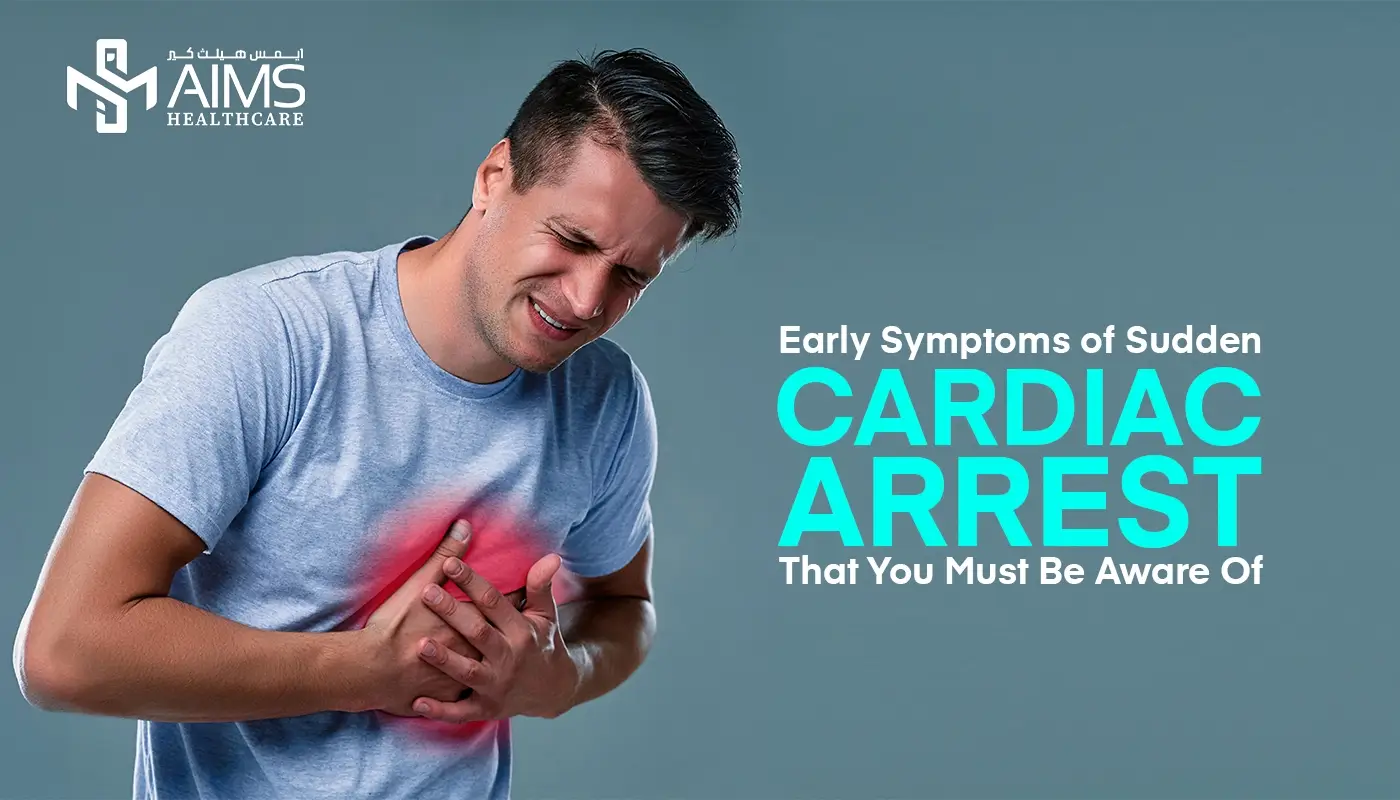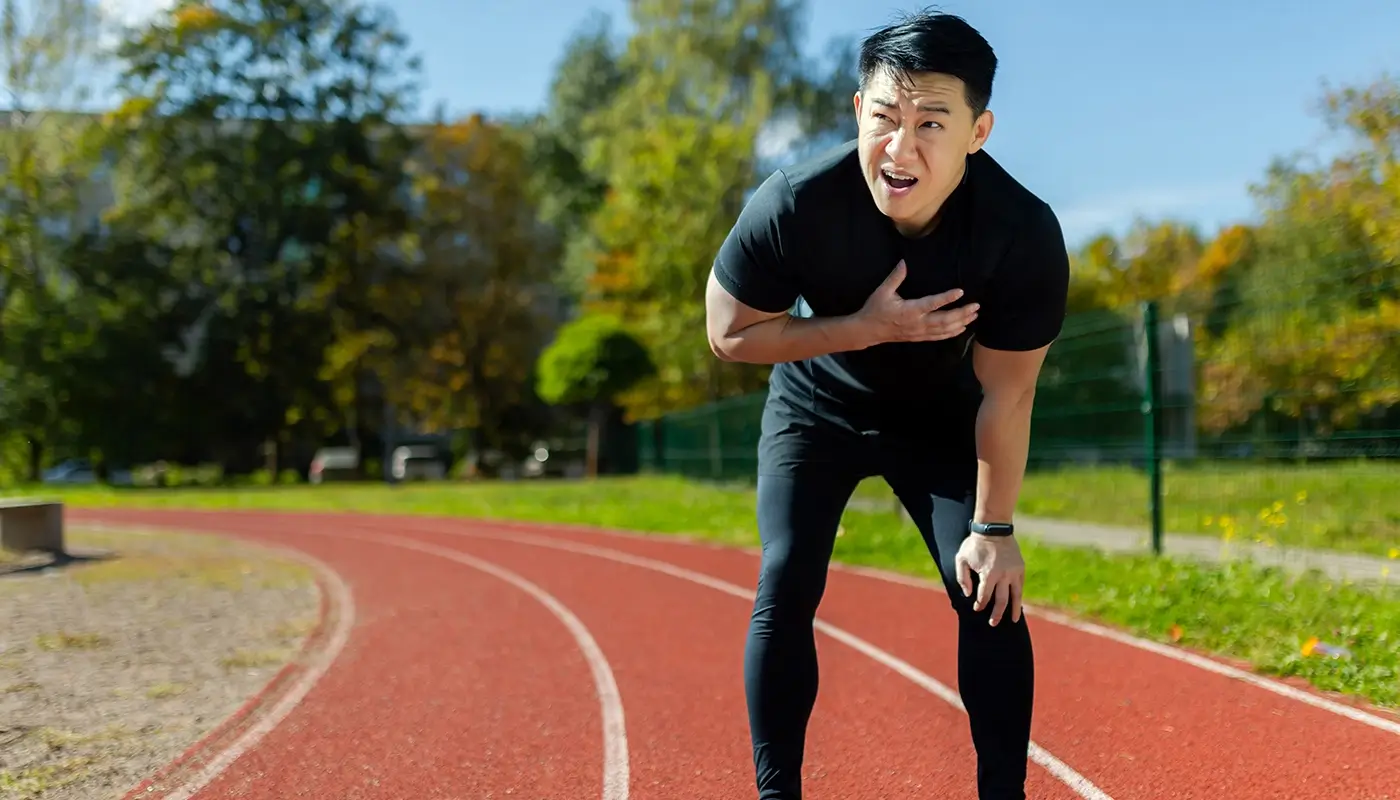
Understanding Iron Deficiency Anemia to Minimize Risks
Table of Contents Stay Strong & Boost Your Well-Being. Take proactive steps to Conquer Iron Deficiency Anemia Iron plays a vital role in the human

Imagine you are having a typical day at work when suddenly you see your colleague collapse on the floor. He is not breathing, and you cannot feel his pulse. You realize he is having a sudden cardiac arrest (SCA), and you must act fast to save his life.
What is sudden cardiac arrest, and how is it different from a heart attack? How can you recognize the early signs and seek prompt medical attention? How can you prevent sudden cardiac arrest from happening to you or your loved ones?
In this blog post, we will answer these questions and more. We will explain what SCA is, what causes it, what symptoms to look out for, and what treatment options are available. We will also provide some tips on reducing the risk of sudden cardiac arrest by adopting a healthy lifestyle.
SCA is a sudden and unexpected loss of heart function, breathing, and consciousness. It occurs when the heart’s electrical system malfunctions and causes the heart to stop beating normally. This prevents blood from flowing to the brain and other vital organs, resulting in death within minutes if not treated immediately.
The most common symptom of sudden cardiac arrest is loss of consciousness. The person may collapse, become unresponsive, or stop breathing. Other symptoms may include:
However, SCA can also occur without any warning signs or symptoms. Nearly half of the people who experience sudden cardiac arrest have no prior symptoms. This makes sudden cardiac arrest unpredictable and dangerous.
Sudden cardiac arrest can happen to anyone, at any time, and in any place. It can happen while sleeping, working, exercising, or driving. It can happen to people who are young or old, healthy or sick, male or female. It can happen to people who have no known heart problems, as well as those who have a history of heart disease.

According to the World Health Organization (WHO), about 7.9 million people die from cardiovascular diseases yearly, accounting for 3 % of all global deaths. In Dubai alone, cardiovascular diseases are the leading cause of death, accounting for 30% of all deaths in 2019.
That is why it is crucial to be aware of the early symptoms of sudden cardiac arrest and act fast to save lives.
The immediate cause of sudden cardiac arrest is usually an abnormal heart rhythm called arrhythmia. Arrhythmia is when the heart beats too fast, slow, or irregularly. The most common type of arrhythmia that leads to SCA is ventricular fibrillation (VF). VF is a chaotic and rapid quivering of the lower chambers of the heart (ventricles) that prevents them from pumping blood effectively.
Many factors can increase the risk of developing arrhythmias and SCA. Some of these factors are:
Besides these heart-related factors, some other factors can trigger or worsen SCA. These include:
Sudden cardiac arrest is a medical emergency that requires immediate action. The only effective treatment for sudden cardiac arrest is electrotherapy (defibrillation). Defibrillation is when an electric shock is delivered to the chest through paddles or pads attached to a defibrillator. The shock can restore normal heart rhythm and blood flow.
However, defibrillation must be done as soon as possible after SCA occurs. For every minute without defibrillation, the chance of survival decreases by 7% to 0%. If defibrillation is delayed for more than 10 minutes, the chance of survival is less than 5%.
That is why it is vital to know how to perform cardiopulmonary resuscitation (CPR) and use an automated external defibrillator (AED) if available. CPR is a technique that involves chest compressions and rescue breaths to keep blood and oxygen flowing to the brain and other vital organs until defibrillation or professional medical care arrives. AED is a portable device that can analyze the heart rhythm and deliver a shock if needed.
Here are the steps to perform CPR and use AED if you witness someone having SCA:

If you survive sudden cardiac arrest episode, seek professional medical care to diagnose the cause and prevent recurrence. Depending on your condition, your doctor may recommend one or more of the following treatment options:
Besides these treatment options, you may also need to make some lifestyle changes to prevent SCA from happening again. These include:
can help lower cholesterol, blood pressure, and blood sugar levels, reducing the risk of heart disease and arrhythmias. Aim for a diet rich in fruits, vegetables, whole grains, lean proteins, and healthy fats. Avoid foods high in saturated fat, trans fat, salt, and sugar.
Physical activity can help strengthen your heart muscle, improve blood circulation, lower blood pressure, and maintain a healthy weight. It can also reduce stress and improve your mood. Aim for at least 50 minutes of moderate-intensity aerobic exercise per week, such as brisk walking, cycling, or swimming. Consult your doctor before starting any exercise program.
Smoking can damage your blood vessels, increase your blood pressure, and reduce the oxygen supply to your heart. It can also trigger arrhythmias and increase the risk of heart attack and stroke. Quitting smoking can improve your heart health and lower your risk of sudden cardiac arrest. If you need help leaving, talk to your doctor about nicotine replacement therapy or other options.
Alcohol can affect your heart rhythm and blood pressure. It can also interfere with some medications you may take for SCA. Drinking too much alcohol can increase your risk of sudden cardiac arrest. Limit your alcohol intake to one drink per day for women and two for men.
Sudden cardiac arrest is a severe and life-threatening condition when the heart stops beating due to an electrical problem. It can cause death within minutes if not treated immediately. You can consult a doctor on call if you experience any symptoms of sudden cardiac arrest, such as chest pain, shortness of breath, dizziness, or fainting. Aims Healthcare offers home healthcare services that provide timely and personalized care in the comfort of your home.
Aims Healthcare is a leading provider of patient-centered care that supports clinical independence and aligns quality, connectivity, and value. Their expertise and experience in treating sudden cardiac arrest and other cardiac conditions can benefit you.
If you have any questions call us at +971 505 136 505 we would love to hear from you.
Yes, some warning signs of an impending cardiac arrest can occur within 24 hours or even up to a month in advance. They can include chest pain, heart palpitations, irregular heartbeat, wheezing or shortness of breath, fainting, lightheadedness, dizziness, and flu-like symptoms (nausea, abdominal or back pain).
Some possible warning signs of cardiac arrest are fainting (often the first sign), dizziness or lightheadedness, chest pain, palpitations, and shortness of breath.
Some possible signs or symptoms of a sudden cardiac arrest are collapse and unresponsiveness, absence or faintness of pulse and breathing, and gasping for air.
Some possible red flags for sudden cardiac arrest are: family history of sudden cardiac death or inherited heart conditions, previous heart attack or heart failure, abnormal electrocardiogram (ECG) results, and use of illicit drugs or stimulants.
Two common signs of cardiac arrest are loss of consciousness and no normal breathing.

Table of Contents Stay Strong & Boost Your Well-Being. Take proactive steps to Conquer Iron Deficiency Anemia Iron plays a vital role in the human

Table of Contents In recent years, IV therapy with vitamins, minerals, and other essential micronutrients has grown in demand, as it is known for enhancing

Table of Contents In Dubai during the summer, temperatures reach scorching heights; therefore, staying hydrated is quite essential for your health and well-being. Staying hydrated